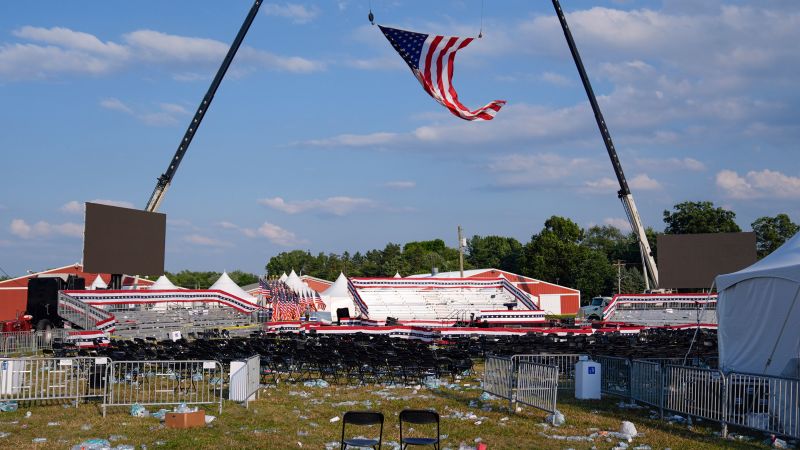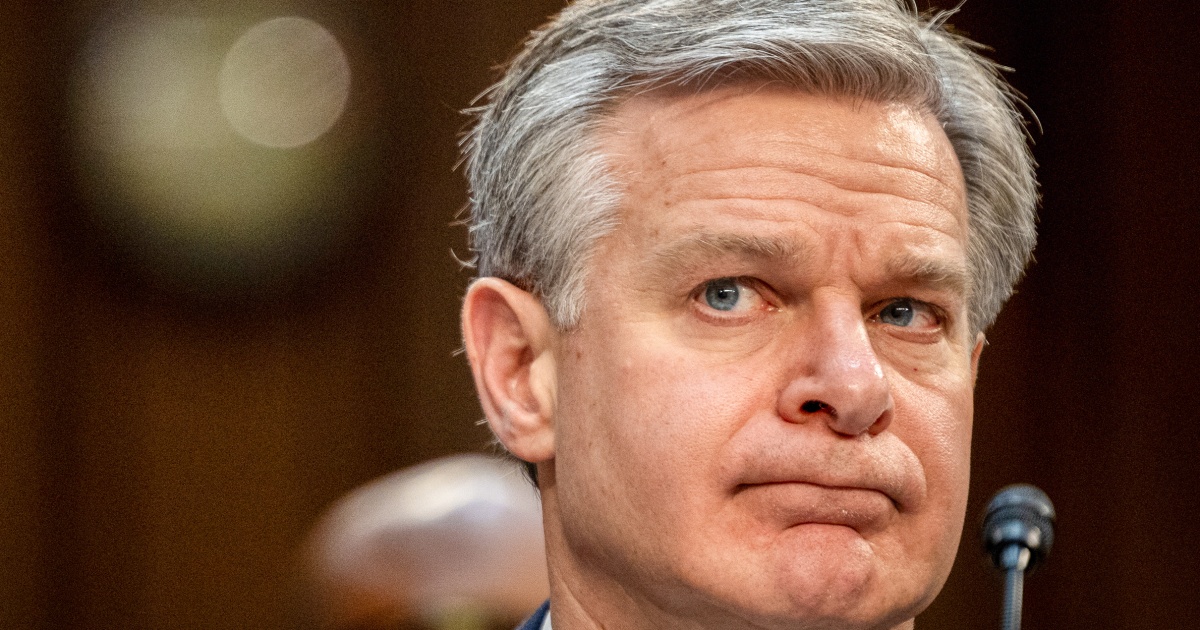
It’s been five days since gunfire erupted at Republican presidential candidate Donald Trump’s rally in Butler, Pennsylvania, resulting in an injury to the former president, the death of one attendee, Corey Comperatore, and severe injuries to two others.
And although the images we’ve seen of Trump since his attempted assassination have been those of a person who was barely injured and is now in high spirits, what we’ve been told by the campaign offers very little insight into the former president’s condition, what kind of care he received or how his medical team will monitor him in the days and weeks ahead.
A full public assessment of Trump’s injuries is necessary, for both the former president’s own health and the clarity it can provide for voters about the recovery of the man who could become president of the United States once again. The concern is that gunshot blasts near the head can cause injuries that aren’t immediately noticeable, such as bleeding in or on the brain, damage to the inner ear or even psychological trauma. As a trauma neurosurgeon, I have seen how a thorough evaluation after any kind of gunshot wound can provide a complete picture and lead to a speedier recovery.
The first official communication about Trump’s health from his campaign came about 40 minutes after the shooting. It simply said Trump was “fine” and was “being checked out at a local medical facility.” It added that more details would follow.
However, the only other official details came about two hours later, in a post by Trump himself on Truth Social, where he wrote: “I was shot with a bullet that pierced the upper part of my right ear. I knew immediately that something was wrong in that I heard a whizzing sound, shots, and immediately felt the bullet ripping through the skin.”
Beyond that, most of what we know about his injury is based on what we’ve seen in pictures and video, and from secondhand accounts.
A source familiar with the matter told CNN on Sunday that Trump underwent a number of “routine” tests at the hospital, including a CT scan that came back normal.
CNN has repeatedly reached out to the Trump campaign and Butler Memorial Hospital, where Trump was treated, for more information but has not received further details about his condition or care. CNN reached out to the Trump campaign for comment again Thursday.
In the moments immediately following the sounds of gunfire on Saturday, we saw Trump raise his right hand to his ear and the side of his face. He did not collapse but seemed to duck to the ground of his own accord.
With US Secret Service surrounding him, he stood up about a minute later, raised his right arm and was able to walk and speak immediately. We saw him rouse the audience, telling them to “Fight!” as he pumped his fist in the air. From a medical standpoint, these are all very good signs and, despite the visible blood on his face, provided evidence that he wasn’t severely injured.
US Rep. Ronny Jackson, Trump’s former White House physician, said during an interview Monday on “The Benny Show” podcast, that he “checked out” the wound to Trump’s ear and bandaged it himself. He added that “there was no concussive effect from the bullet” because it was far enough from Trump’s head.
“It just took the top of his ear off, a little bit of the top of his ear off, as it passed through,” Jackson said. “It was bleeding like crazy.”
Trump was transported to nearby Butler Memorial Hospital. Dr. David Rottinghaus, an emergency room physician there, said the hospital had been in contact with the Secret Service before Saturday’s rally. Rottinghaus, who did not treat Trump himself and would not comment on Trump’s treatment or condition, said he came to the hospital shortly after the shooting to help triage patients.
“We do prepare for incidents like this. We had had advanced visits in the past for rallies when Mr. Trump was here. The last was the end of 2020. We have worked with the Secret Service in the past and local and federal law enforcement to come up with plans about if an incident like this happened,” Rottinghaus told CNN.
Those plans included designating a bed in the ER in case it was needed, having clinical teams at the rally itself to treat patients on-site for minor medical issues, and avoiding overwhelming the hospital if there were a crisis.
When the unthinkable happened, Rottinghaus said, it took just minutes for Butler Memorial to put its plan into action, locking down the hospital and diverting patients to other health care facilities.
Although we were told that Trump had a CT scan and other routine exams, it is not clear when these tests were performed, who read the scans or whether his brain specifically was examined.
In the Monday interview, Jackson said Trump’s injury was “dressed up. He’ll be OK. … It’s going to granulate and heal in, and he’s not going to need anything to be done with it.”
On Wednesday, in an interview with CBS News, Eric Trump said that his father had “no stitches but certainly, certainly a nice flesh wound.”
And Trump has been moving around the Republican National Convention in Milwaukee this week, talking and smiling through speeches with a bandage on his ear.
All of this points to a favorable prognosis. But it is still surprising that we have not heard more about the exact diagnosis and care of what may have been a catastrophic injury. And, while all the attention has been on his ear and right side of his head, that doesn’t mean other injuries may not be present. It’s not even clear that he was struck by a primary projectile from the rifle, a secondary projectile or a combination of both. Sometimes, it can be difficult to know without an in-depth evaluation.
We do know that the shooter used an AR-15-style weapon, and in my experience in the operating room, I’ve witnessed the kind of trauma this weapon can cause. The kinetic energy of it is significant: A rifle like the AR-15 can produce up to 1,300 foot-pounds of force. With that much power close to the head, there can be injuries beyond what’s visible.
For example, a fracture to the thin bone in that region of the skull, an epidural hematoma (or bleeding between the skull and the brain) and damage to the bones of the inner ear, which can result in hearing loss, vertigo or dizziness.
A CT scan can usually detect such injuries, but they aren’t always immediately apparent. As a result, sometimes patients are observed in the hospital and may even undergo a repeat CT scan.
The stress from a shooting can also have psychological effects.
“In the chaos that immediately follows being shot, these psychological impacts don’t always manifest,” said Dr. Kenji Inaba, a trauma surgeon with the Keck School of Medicine at the University of Southern California. “It can come up later on, and it’s something that we always need to be acutely aware of.”
The good news is that most physical symptoms of an injury would probably have revealed themselves over the past few days. At this point, however, the Trump campaign hasn’t yet shared whether a full workup was done at the time or if there has been any follow-up since.
Presidents and presidential candidates are not required to share their medical histories with the public, but voters have said that the health conditions of their leaders matter to them in this election. More information helps everyone make better decisions.
Rottinghaus, the Butler Memorial physician, told CNN that after all the preparation for the unthinkable, “the unexpected happened” on Saturday. Still, the hospital considers it a successful day: Staff juggled the arrival of a former president with care for their other patients. What made it work, he said, was communication, clear planning and preparation to act.
In an intense political season for the country, that kind of collaboration and communication may be a lesson for the candidates, too.
CNN’s Nadia Kounang, Deidre McPhillips, Maya Davis and Jamie Gumbrecht contributed to this report.






 A picture comparison shows that the photo from the viral X post is taken from this original photo from 2022. Image: Gaelen Morse/REUTERS
A picture comparison shows that the photo from the viral X post is taken from this original photo from 2022. Image: Gaelen Morse/REUTERS  Left: File photo of Trump listens as Vance speaks during a rally in Youngstown, Ohio, in September 17 2022. Right: Trump and Vance interact during the RNC in Milwaukee, Wisconsin, in July 15 2024. Image: Gaelen Morse/REUTERS | Andrew Kelly/REUTERS
Left: File photo of Trump listens as Vance speaks during a rally in Youngstown, Ohio, in September 17 2022. Right: Trump and Vance interact during the RNC in Milwaukee, Wisconsin, in July 15 2024. Image: Gaelen Morse/REUTERS | Andrew Kelly/REUTERS

